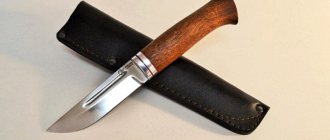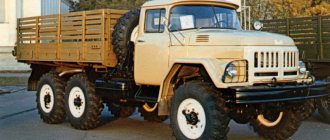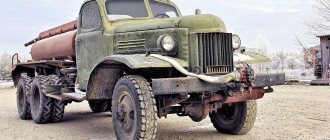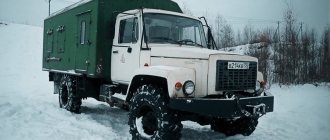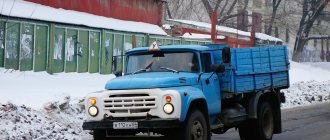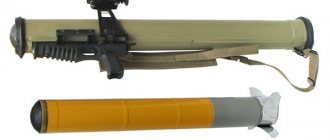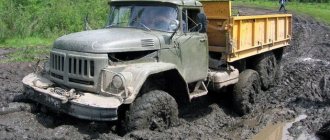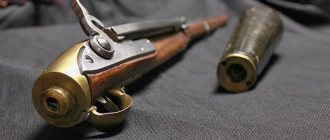A Finnish knife is a self-defense weapon or a hunting or camping weapon, converted by Russian craftsmen from Finnish combat Puukkos. It is distinguished by a narrow blade 10.6-14 cm long, but more often 12.5 cm, a thin rounded handle and an S-shaped guard. The total size is 22-24 cm, some specimens reach 26 cm.
The original weapon, which was used by the special services, is of the cold type. But replicas are sold openly and do not require permission to own. They are produced by the companies AIR, Kizlyar, Vityaz, Russian Bulat, Koval's Forge, Zavyalov's Forge, etc. The cost of products starts from 1,500 rubles. up to 30 thousand rubles
Finnish knife: the legendary history of the famous scout weapon
The Finnish knife originates from Finland, which was once part of the Russian Empire. Its ancestor can be considered a Suomi weapon called Puukko. But it is still more for hunting and fishing, and the history of the Finn began with its use as a military weapon. And not only for the army or for special services.
At first, the knife was liked by criminals and was also used for self-defense. This is how it was made at the beginning of the 20th century in Tsarist Russia, slightly modified and adapted to new tasks.
The Finnish knife as a scout knife appeared during the war with Finland. It was converted by Soviet specialists from weapons captured from the enemy and was named HP-40. Finnish knives from Scandinavian craftsmen attracted attention because enemy soldiers wielded them very skillfully, quietly and quickly cutting out Red Army units.
The new Soviet ones, made on their basis, are factory-made products, well adapted not only for combat missions, but also for camp life. In essence, these are improved Puukko, but more practical and safe for the owner. They began to be mass-produced in 1935 in the village of Vacha, Nizhny Novgorod region. The guns were used by the army and Soviet intelligence services.
Modern replicas
Today, the “Finka-2” and “Finka-3” models are popular among collectors.
Today, it is quite difficult to purchase an original NKVD Finka. Most often, such knives appear at foreign auctions, and their cost can be thousands of dollars. Therefore, if you want to touch history, you should pay attention to the numerous replicas of the legendary knife. They are made by various manufacturers and may differ not only in appearance, but also in quality.
As a rule, such duplicates are produced in a slightly modified design plan. The purpose of this approach is to exclude them from the class of edged weapons and release them for free sale.
The first company to start producing replicas of the legendary Finnish NKVD was AiR, based in the city of Zlatoust. It was here that the Finka-1 model appeared, which over time received several modifications. Among modern collectors, the “Finka-2” and “Finka-3” models are especially popular.
What is so special about the NKVD Finnish knife?
The NKVD Finnish knife or any other knife belonging to this category is known for its practicality and versatility. Products mainly have fixed blades, but there are also folding models. Finka differs from other knives:
- small sizes - 22-24.7 cm;
- the presence of a stop or S-shaped guard;
- a narrow blade with a beveled spine, 10.6-12.5 cm long;
- valleys running parallel to the blunt part of the part;
- a rounded or slightly curved handle with a non-slip surface and a mushroom-shaped pommel.
A traditional knife differs from a Finnish knife in that it is designed to solve narrow problems. Finnish, despite its small size, is suitable for self-defense, use at home, fishing or hunting. Design features make it safer for the owner.
The Finnish knife looks like a military weapon, although in most cases it is not. His most famous replicas belong to the category of tourist, hiking or gift items.
Blade dimensions, handle
Drawing
The dimensions of the Fink knife vary from 22 cm to 24.7 cm. The main parameter is the length of the blade, which for the classic model is 12.5 cm, but can be less - up to 10.6 cm.
The width of the part should be no more than 2 cm, and the thickness - up to 0.4 cm. This is a characteristic feature of the weapon - a narrow and short blade with a thin tip. The part is of the clip point type, that is, it has a bevel on the butt. Or is he straight? There are valleys along the butt on both sides, making the blade lighter and more maneuverable.
The weapon has a guard or, at a minimum, a limiter that prevents your hand from slipping onto the blade. Models with a bolster can be held with a Finnish grip, that is, resting on the palm. Some weapons have a “heel” in front of the guard - an unsharpened section of the blade. Thus, with a direct grip, the index finger lies on the blade, but the skin cannot be injured. But the direction of the cut is perfectly controlled.
Drawing
The handle of the product was originally wooden. But modern models use bakelite and other synthetic materials. The shape of the part is round, sometimes tapering towards both edges or thickening towards the end. The pommel comes in the form of a fungus and can be made of brass or another metal alloy.
Materials
Previously, the blades of Finnish knives were made from 2-3 worn braids. They were formed into a package, that is, folded, heated, and forged into a monolithic piece. Sheets were then made from it, blanks were cut out, processed and mounted on a wooden handle.
Modern replica guns are made of high-carbon steel with a hardness of 58 HRC, with the addition of nickel and chromium. They are durable, remain sharp for a long time, and with good care are not subject to corrosion. There are also cheaper models with stainless steel blades.
The handles of souvenir knives are made of Karelian birch, animal horn, with cupronickel inserts and leather additives. The same part can be created from hornbeam with brass, a polymer material.
Is it a bladed weapon?
In the photo there are Finnish knives that are freely available (not being weapons).
The original Finnish knives are edged weapons (KW), as they have the appropriate technical parameters, which are specified in GOST R 51215-98:
- handle with finger grooves;
- blade length is more than 9 cm;
- butt thickness from 0.24 cm;
- the angle of convergence of the butt and blade is less than 70 degrees;
- the presence of a stop-limiter.
But it is difficult to find such a weapon for sale, and it is very expensive. To own, you must obtain permission. And Finns that are freely available are not XO, since their size and characteristics do not fall under this definition. Such knives are classified as tourist, camping, or souvenir knives, as stated in the certificates attached to them.
Drawings and dimensions (photo)
According to its standards, the Finnish NKVD fits the following parameters:
- The length from the tip of the blade to the end of the handle is 245 mm.
- The blade is 130 mm long.
- The blade width is within 18 mm.
- The blade's spine is 4 mm thick.
IMPORTANT. The original product was sharpened on one side. The hardness of the steel on the Rockwell scale (HRc) was 58 units. The configuration of the double-sided guard featured an original S-shaped bend.
Finnish folding knives and other popular types
Finnish knives are mostly fixed, but there are also folding ones. Popular types:
- collapsible;
- monolithic;
- without a guard, but with a bolster, suitable as a cutting guard;
- Puukko;
- similar to a souvenir, but also having a practical purpose, the Saboteur.
Finnish folding knife
The collapsible knife is distinguished by the ability to remove the guard after unscrewing all the parts. Between the blade and the handle there is only a bolster, which gives the product a more traditional look and makes it similar to Puukko. Although such tools have the classic dimensions of a finca: a blade of 12.5 cm and a handle of 12 cm. The last part is barrel-shaped and has a metal pommel with a “fungus”.
The blade passes through the entire handle and is secured with a closed nut. The handle can be wooden or made of horn.
Finnish knife Puukko
Finka Puukko is not exactly the same as traditional Finnish, it is different:
- large sizes – up to 28 cm;
- large blade up to 15 cm long, up to 2.5 cm wide, universal type;
- Scandinavian, that is, low slopes;
- a rounded handle with a pommel “cap”, “mushroom” or in the form of an animal’s head;
- lack of guard;
- the presence of a metal bolster.
These tools are also convenient and practical, but less versatile. They are more likely to be used for hunting than for tourism, for self-defense or for hiking. However, there are several types of them for different tasks. They differ in size. The best Puukkos are not made in Russia, while Finnish ones are worth buying domestically produced.
Finnish knife Saboteur
The non-separable weapon Saboteur is manufactured by the Vityaz company from alloy steel 50Х14Мф with a hardness of 56-58 HRC and wood. This is a Finnish blade of traditional appearance and size with a fixed blade of the mounted type. The steel part is quite flexible.
The gun has an S-shaped guard and a brass pommel. A five-pointed star, St. George ribbons and laurel leaves are carved on the narrow rounded handle. This not only makes the product attractive, but also allows you to hold it more firmly in your hand.
The name of the knife is engraved on the blade along the blade, and the name of the manufacturer is engraved at the base. The sheath is made of nylon. And since all materials are budget, the price of the product is 1900-2000 rubles. It is suitable for household use and collection.
Finka NKVD cutting knife
The NKVD finka can also be used as a cutting knife when hunting; at home, it is more convenient to have a more traditional tool. To work with an animal carcass, it is better to use a product with the largest possible blade of 13-14 cm, a width of 2.5 cm and without a guard; these are also available. Usually they are collapsible, that is, the guard that interferes with work can be removed.
Knives without it are also available for purchase - from AIR, NOX, Kizlyar. They have a bolster that protects against cuts.
The handle of a Finnish carving knife is made of wood or horn. It does not slip and does not cause discomfort in the cold or when wet. The tool can be bought for 3500-4700 rubles, but there are also more expensive ones made of powder steel - up to 30 thousand rubles. Suitable examples are produced by the companies Medvedev's Forge, Heritage, Zavyalov's Forge, and Russian Bulat.
Forbidden knife
In 1923, the government banned the purchase of hunting firearms and bladed weapons in an attempt to combat crime. From that moment on, it was possible to purchase weapons only with the permission of the police. But how can you ban a finca if you can make it yourself or find a craftsman?
The law, as often happens, again curtailed the rights of law-abiding citizens and had no effect on those who were at odds with it. Handicraftsmen began to appear who made finches to order. Often such knives were very different from a real Finnish knife.
But this did not matter; in the criminal environment, the word “finca” began to be used as a synonym for the word “knife”
A self-respecting bandit, even if he couldn’t get a revolver, was simply obliged to have a Finn. Otherwise, what kind of bandit is he? There was no shortage of craftsmen at that time. In the zones, for example, the production of fincas for subsequent release allowed prisoners to improve their quality of life.
Photo: Vladimir Astapkovich / RIA Novosti
In April 1935, the Council of People's Commissars issued Resolution No. 598, the essence of which was that the same standards were applied to children over 12 years old as to adults. That is, for robberies, murders, attacks and hooliganism, a 12-year-old boy from the street now received a very real sentence.
This suggests that the average age of an ordinary criminal was small at that time, and seasoned crime bosses used children as accomplices in their affairs.
From the resolution of the Council of People's Commissars No. 598 of April 7, 1935
Minors convicted of committing thefts, causing violence, bodily harm, mutilation, murder or attempts to murder, starting from the age of 12, are brought to criminal court with the application of all criminal penalties. Persons convicted of inciting or attracting minors to participate in various crimes, as well as forcing minors to engage in speculation, prostitution, begging, etc., shall be punished with imprisonment of at least five years
Along with this, the Finnish woman was banned in the same year. Selling and carrying Finnish knives without permission from the NKVD was now impossible. But the definition of a Finnish knife as a knife in the law was vague: in fact, any knife could be recognized as a Finnish knife. Perhaps this was explained by the fact that the Finnish women of the Russian underground masters varied greatly in appearance and proportions.
Decades later, a similar situation arose in the United States, where in 1958 the possession, production and sale of automatic knives (knives) and balisongs (butterfly knives) were banned.
The reason for the ban was the popularity of these knives among members of street gangs and biker groups, for whom miscarriages and butterflies were the same calling card of crime as the Finnish knife in the USSR and Russia. Interestingly, in a number of states this ban still exists: it is easier to buy a pistol there than a switchblade.
Is it possible to make a Finnish NKVD knife 1935 with your own hands?
The product can be made with your own hands so that you get an NKVD Finnish knife from 1935: you need to have a sheet of good steel, for example, grade 95X18, for the handle - a wooden block, and the guard and pommel are made from pieces of brass. You will need a set of discs of different diameters and with belts of different abrasiveness, a vice, and welding. The whole process consists of several stages:
- A drawing is made on paper or cardboard, possibly in two projections.
- On its basis, a cardboard template of a blade with a shank is cut out.
- It is fixed on a steel sheet, outlined and the workpiece is cut out along the lines using a disk machine.
- It is leveled using a flat grinder.
- Using a disk, draw a valley along the butt.
- The runs are made on a large disk with a diameter of 40 cm using a coarse 40-N abrasive.
- The next stage is hardening the blade in a forge, followed by cooling in oil and tempering.
- The bevels and blade are treated with a finer grit disc to level and polish.
- The final polishing of the blade is carried out first on a disk with a 4-N fine abrasive tape, and then on felt and GOI paste.
- The finished guard and butt are processed on a milling machine so that they fit the size of the blade and tang.
- The working part of the blade is wrapped with masking tape.
- A polished guard is placed on the shank.
- Holes are made in it for fastenings for a rod with a thread for a nut; it can also be welded.
- To make the handle, a birch block is turned and polished.
- A hole is made in it with a diameter corresponding to the thickness of the shank.
- In a small container, mix epoxy resin with hardener.
- The composition is coated with the place where the blade connects to the guard, the rest of the liquid is poured into the hole in the handle blank.
- The shank is also inserted there; its threaded tip should stick out from the other side of the wooden block.
- A nut is screwed onto it to secure the structure.
- The nut and pin are covered with a brass cap, which will be held in place by the epoxy mixture.
- The knife is placed in a vice and left to dry for a day.
- The handle is ground on a Grinder machine using sandpaper.
- To ensure smoothness, it is sanded by hand, clamped in a vice.
- The pommel is polished, including using GOI paste.
- The wooden part of the handle is treated with beeswax.
Watch the video of the complete production of the “NKVD Finka” knife:
Who produces the Finnish knife, like in the USSR, their characteristics
The Finnish knife was produced not only during the Soviet era; there are also modern models from different companies. They are intended for both practical purposes and collections. Therefore, they can be made of inexpensive and easily sharpened stainless steel, with a synthetic handle or high-carbon material in combination with expensive wood, genuine leather, cupronickel or silver inserts. Only the characteristics remain unchanged:
- blade 12.5-14 cm long, 2-2.5 cm wide, 0.4 cm thick, with a “pike” spine and fullers;
- double-sided guard in the shape of the letter S, a blunt heel in front of it, less often a bolster, a finger stopper;
- one-sided blade sharpening;
- barrel-shaped handle with a mushroom pommel.
Such guns are produced by companies:
- AIR,
- KNOX,
- steelclaw,
- Kizlyar,
- Forge Koval,
- Sedov knives,
- Pavlovsk knives,
- Krutov knives,
- Iron brothers.
AIR
The gun from the AIR company almost completely corresponds to the original weapons of the NKVD workers, but does not belong to the category of chemical weapons. The manufacturer makes products with blades of 13 cm, the overall size is 24.3 cm. The steel grade can be selected when ordering, if you contact the manufacturer directly. There are also ready-made tools for sale, the most popular is the Fink 2 knife. It is available in several versions:
- made of steel 95x18 with a handle made of Karelian birch;
- made of the same material for the blade, but with a hornbeam handle;
- made of steel ZDI-1016 and a wooden handle with a steel guard and an aluminum butt;
- made of ZD-1016 steel with a birch bark handle.
There are also Finnish knives from Zlatoust with handles made of walnut, leather, and plexiglass.
Finka 3
The Fink 3 knife is different in that it does not have a guard. This makes the weapon more convenient for camping or hunting. The bolster protects your hand from a careless cut. Products are also produced by AIR, there are several models:
- made of Damascus steel with a stacked leather handle, aluminum bolster and butt pad;
- made of steel grade ZD-0803 with a walnut handle;
- base made of material 95Х18 and Karelian birch, with bolster and pommel made of textolite;
- made of Damascus steel and birch bark.
In this category there are cutting tools and camping tools, the former are slightly larger.
Finka T
The Finka T knife is manufactured by NOKS from AUS-8 steel and black fiberglass. Its distinctive feature is its size of 26.8 cm, of which the blade is 14.6 cm. The guard is also S-shaped. But it is part of the blade, and is not attached to the shank separately. The butt plate is missing, the pommel of the handle is also solid. It is slightly bent downwards.
Reptilian
The Reptilian is made by Steelclaw from D2 steel and is a folding weapon unlike the previous ones. The blade is hard, cuts well, but needs care to prevent rust. The gun handle is made of G10, it is textured and resembles reptile skin. The part has a finger rest, its shape is slightly curved, anatomical. The overall size when unfolded is 25.2 cm, the blade is 11.2 cm, its width is 2.4 cm. This is the Finka 01 knife.
The line also includes a folding handle with a blue handle, this is the Fink-3 model. In terms of parameters, it corresponds to the previous copy.
Kizlyar
Finka from Kizlyar exists in several modifications:
- made of AUS-8 steel with elastron and walnut handles;
- made of material grade X12MF and elastron;
- made of Z90 steel and polished walnut;
- made of steel 110Х18 and elastron.
All models are characterized by the absence of a curved and wide guard, that is, these knives are by no means a traditional Russian Finnish knife. They either have a small stopper or a metal bolster. The blades of the knives are 11.4 cm, the total length is 22 cm.
Vacha
Vacha is manufactured by AIR from steel 95Х18 and hornbeam. Brass is used for the guard, and the butt, like the upper part of the handle, is made of textolite. In terms of dimensions, it almost matches the original weapon from 1935, but is not a CW.
The rare Finnish knife Finn Vacha can also be found at auctions. It differs from modern replicas in its light-colored handle with dark wood inserts. And its price is ten times higher.
Finnish knife with star
The fin with a star is produced by different companies, similar ones are available from:
- Forges Koval. The collectible item is made of carbon steel, hornbeam and plastic. There is a red star on the white part of the handle. The blade is classic, 12.5 cm long, overall size – 23.5 cm.
- Sedov's knives. These tools are folding, also for collection. Available with handles made of dark hornbeam and light acrylic. The blades are 10 cm long, total size – 23 cm.
Vorsma
The finka from Vorsma is made from damask steel and elk horn. Blade length – 12.7 cm, total – 24 cm. The guard and butt are made of brass. The product even cuts paper, as it has the thinnest blade. But it's more of a gift.
From damask steel
In addition to the previous copy, a damask steel finca can be found at the Russian Bulat company. We are talking about model 041, made using rubber-plastic. This is not a classic Finnish knife; it does not have a guard or a bolster. The handle is barrel-shaped, thickened, non-slip. Therefore, the tool is convenient in everyday life, hunting, and fishing. The length of the blade is 10.9 cm, the total length is 21.5 cm.
Lappi
The AIR company has the Lappi finka, it is no larger than a traditional Finnish weapon:
- blade 12 cm long, 2.2 cm wide;
- overall size 23.8 cm.
There is no guard, there is a thickened aluminum bolster. The base product is made of 95x18 steel and wood. The company makes knives to order from more expensive materials.
NKVD knife from Pavlovsk knives
Finka NKVD from the company Pavlovsk knives is made of forged diamond steel and wenge. Brass was chosen for the guard and butt plate. These are hand-made, made-to-order products. Their parameters are traditional for Finnish ones - the blade is 12.5 cm, the overall size is 23.5 cm.
Watch the video review of the Finka NKVD knife from Pavlovsk Knives:
Damascus steel
Knives of Krutov and Iron Brothers have blades made of Damascus steel. The first ones are quite large - with blades of 14 cm, a total size of 26 cm. Black hornbeam and cupronickel were used to create them.
The Iron Brothers' products are made from the same materials. But their blade is 12.5 cm, the overall size is 25 cm.
Combat use
The original puukko is primarily a combat knife, and only then a household tool. Although these definitions may change places depending on the situation. Among Finnish intelligence officers during the Soviet-Finnish War (1939-1940), the Finnish combat knife “Lynx,” a type of puukko, was very popular. It was mass-produced since 1879 and had the following dimensions:
- total length – 260 mm;
- warhead length - 145-160 mm;
- blade width – 18-20 mm;
- blade thickness – 3 mm;
- weight – 100 grams.
The design had longitudinal grooves - valleys, which increased the rigidity of the blade. The front fragment of the butt was slightly beveled. The small dimensions of the knife did not interfere with maintaining combat characteristics.
It easily penetrated the flesh, even through thick layers of winter clothing, and was silently removed. The sharpening of the blade could rival the sharpness of a razor. Finnish intelligence officers filmed the Red Army sentries in absolute silence.
The Lynx knife became the prototype of a series of combat knives of the Soviet Union, the most famous of which can be considered:
- scout knife HP-40/43;
- SMERSH knife;
- Finnish NKVD.
Some models of the listed knives are in service with some states that were part of the Warsaw Pact, including, for example, Poland. A new type of bladed weapon, “Punisher,” has been developed for units of the Russian FSB. This specimen is a replica of the Finnish knife.
The modern Suomi army is armed with the M-95 knife (Fiscars). The blade has increased rigidity with sharpening without a heel. The top of the metal is covered with an anti-reflective dark coating. The hand rest is made of hard rubber, allowing the handle to sit firmly in a wet hand.
The relatively heavy weight of the knife—200 g—allows you to deliver chopping blows to an object. In addition to the Suomi Army, the M-95 is in service with special units of Sweden.
Price for a Finn knife
The price of a Finnish knife varies from 1500 rubles. up to 30,000 rub. The most budget-friendly of all that were discussed are products from the Kizlyar company - 1500-2500 rubles. In the middle segment there are AIR guns - 3500-6000 rubles. The most expensive ones are made of Damascus and damask steel, precious woods, and cupronickel. But these are more likely souvenir specimens, although they are sharp and durable.
Traditional fins with a guard are not very convenient in everyday life precisely because of this detail. But they are beautiful, light, balanced, so they will be an excellent gift for a collector. For practical use, it is better to choose cutting fins, that is, those with a bolster.
